Elastic launches GPU-accelerated inference service for AI workflows
Introduction & Market Context
Eventbrite, Inc. (NYSE:EB) released its second quarter 2025 results on August 7, showing continued year-over-year declines across key metrics while making notable progress on cost management and debt reduction. The event management and ticketing platform faced headwinds in paid ticket volume and revenue generation, but demonstrated financial discipline through reduced operating expenses and improved balance sheet health.
The company’s stock closed at $2.21 on August 7, 2025, but subsequently dropped 10.16% following the earnings release. This reaction contrasts with the positive stock movement seen after Q1 results, suggesting investors may have had higher expectations for recovery signs in the second quarter.
Quarterly Performance Highlights
Eventbrite’s Q2 2025 results showed declines across most key performance indicators compared to the same period last year. Paid tickets reached 20 million, down 7% year-over-year, while gross ticket sales fell 10% to $755 million. Net revenue decreased 14% to $73 million, with net revenue per ticket declining 7% to $3.70.
As shown in the following chart of quarterly highlights, the company reported a net loss of $2.1 million for Q2 2025, compared to a net income of $1.1 million in the prior year period:
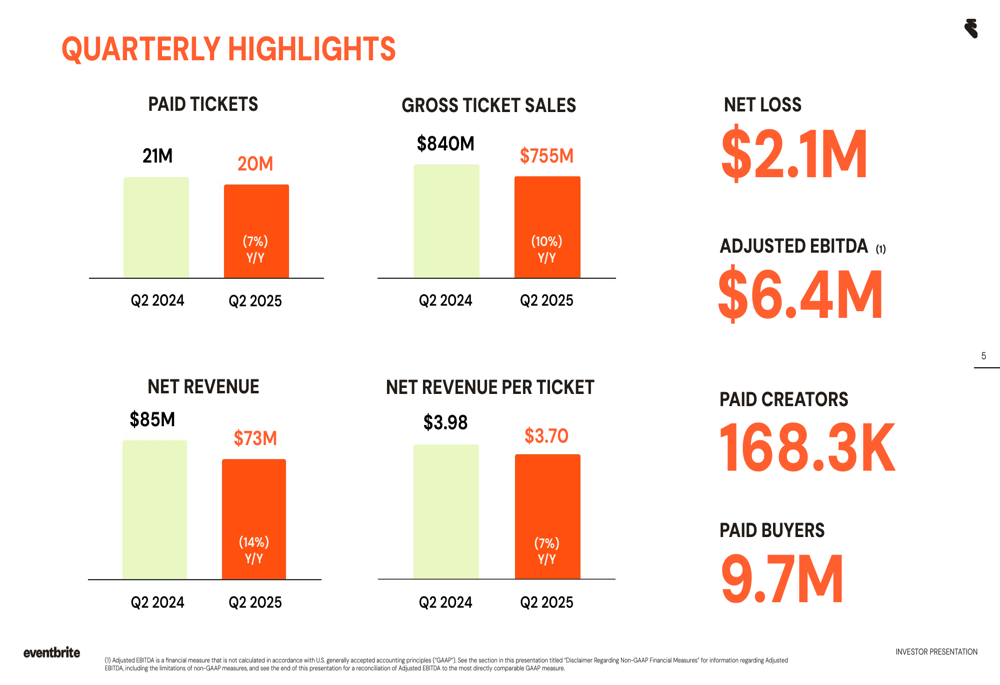
Despite these challenges, Eventbrite maintained positive Adjusted EBITDA of $6.4 million with an 8.8% margin. The company also reported 168,300 paid creators, representing a 5% year-over-year decline, though this was an improvement from the 7% decline seen in Q1 2025.
There are early signs of potential stabilization, with management noting that July 2025 paid ticket volume was down just 1% year-over-year, a significant improvement from the 7.3% decline seen in Q2.
Detailed Financial Analysis
A closer examination of Eventbrite’s revenue composition reveals shifts in the business model. As illustrated in the following chart, marketplace revenue declined more significantly than ticketing revenue, suggesting challenges in the company’s demand generation business:
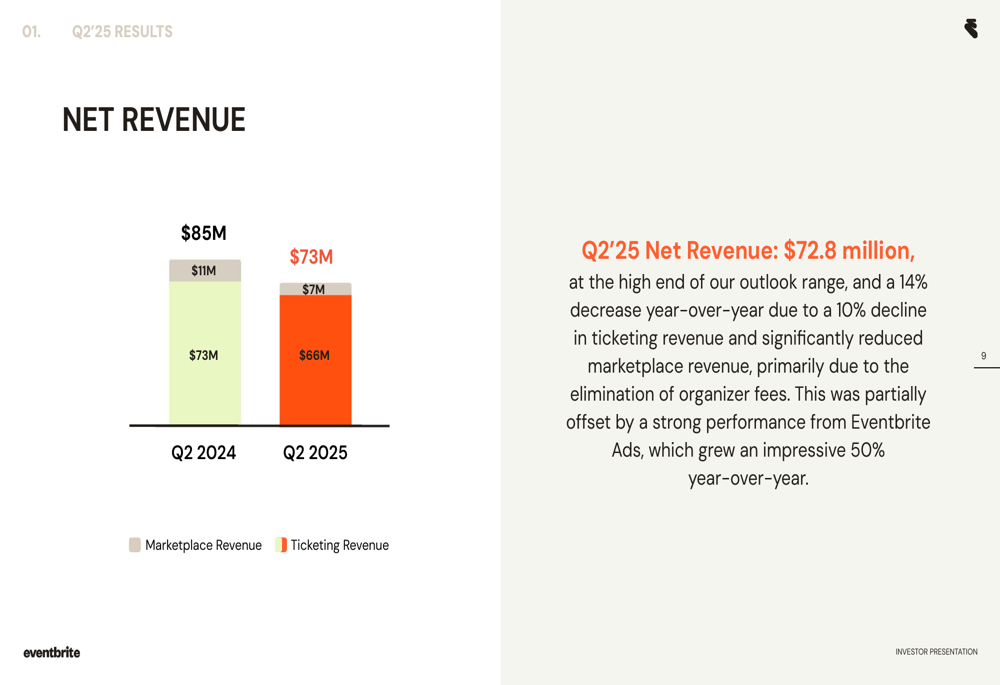
The company has made substantial progress in cost management, with operating expenses decreasing 16% year-over-year to $55.4 million in Q2 2025. This marks the fifth consecutive quarter of expense reductions. Stock-based compensation saw a particularly sharp decline of 51% year-over-year to $7.5 million.
Eventbrite has also significantly improved its balance sheet position. Debt outstanding decreased 33% year-over-year to $241 million in Q2 2025, with further reduction to $176 million by August 7, 2025, following a $125 million repayment of 2026 Notes partially offset by a new $60 million term loan:
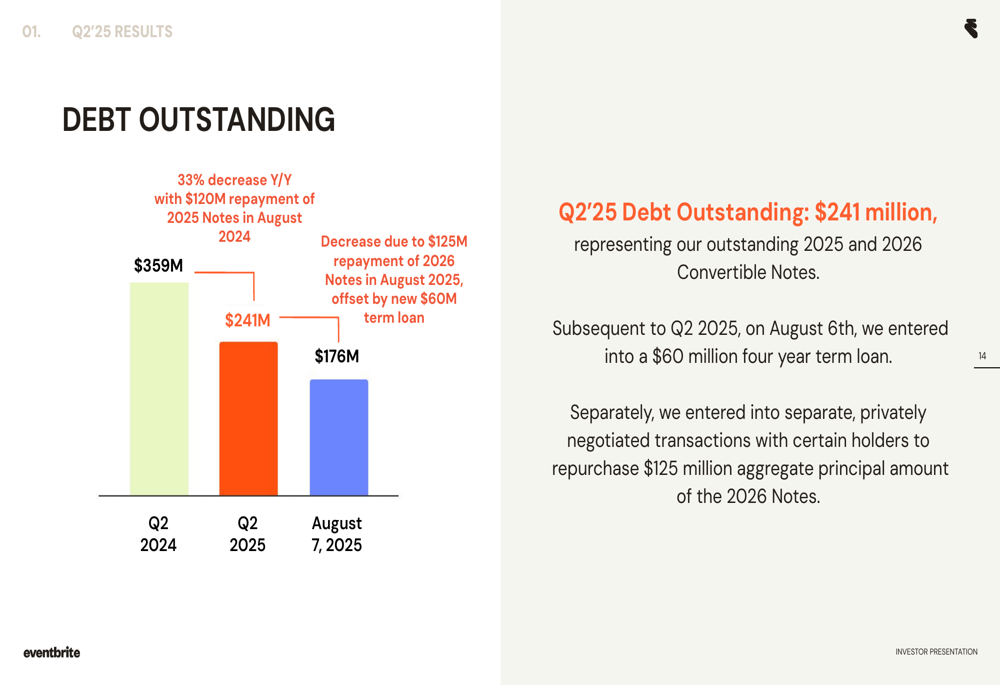
The company’s available liquidity stood at $248 million at the end of Q2, representing a $7 million increase from the previous quarter. This financial flexibility provides Eventbrite with a buffer to navigate current challenges while investing in strategic initiatives.
Strategic Initiatives
Eventbrite outlined several key investment highlights in its presentation, focusing on its position in a large, global market and the marketplace dynamics that drive its business model:

The company emphasized its scaled and trusted events marketplace, operating in 180 countries with 89 million average monthly users. Eventbrite reported 67% aided brand awareness among the general population and 73% among 21-35 year-old active event-goers in Q2 2025.
A core element of Eventbrite’s strategy is its marketplace flywheel, which connects creators and consumers in a virtuous cycle:
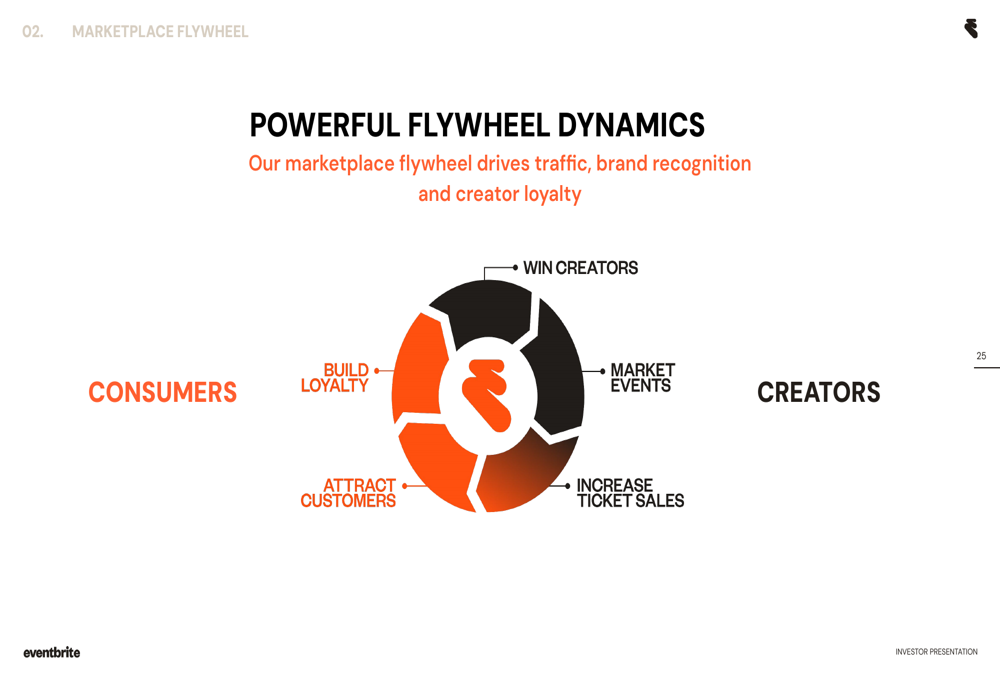
The company is focusing on increasing strategic inventory to drive growth. As shown in the following examples, Eventbrite has had success with high-profile events such as Mega Events, Rose Bowl Flea Market, and FoodieLand:
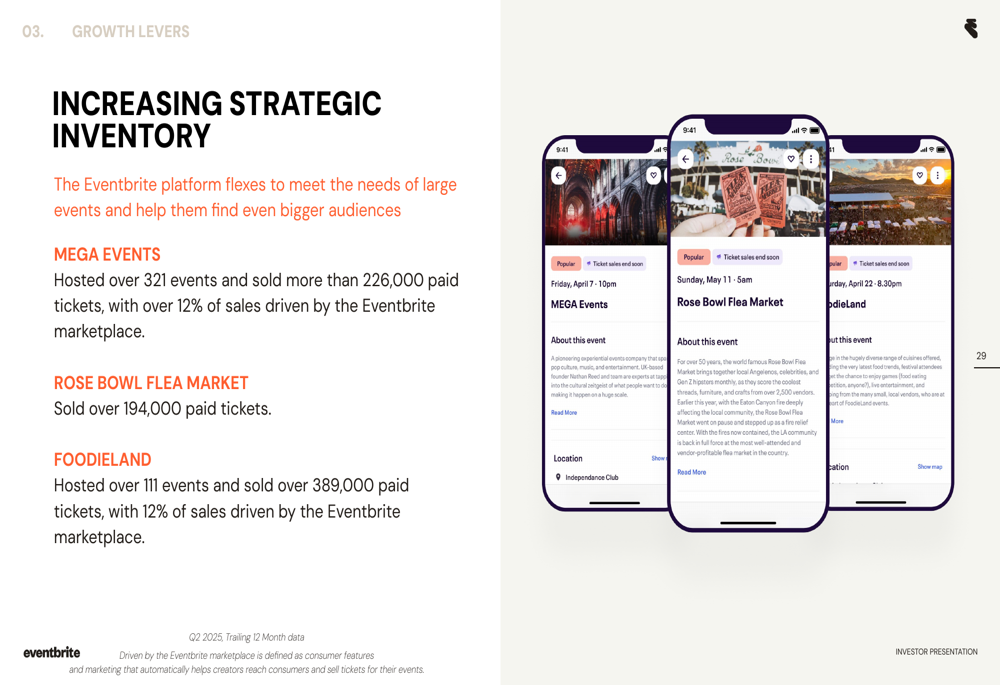
Eventbrite is also investing in monetization opportunities through marketing tools and advertising. The company reported that events promoted with Eventbrite Ads had 9x more visibility and sold 4x more tickets, while organizers using built-in sales and marketing tools saw a 67% average increase in tickets sold:

The presentation highlighted key financial strengths that support the company’s strategic initiatives, including strong liquidity, reduced debt, and sustained operating expense reductions:
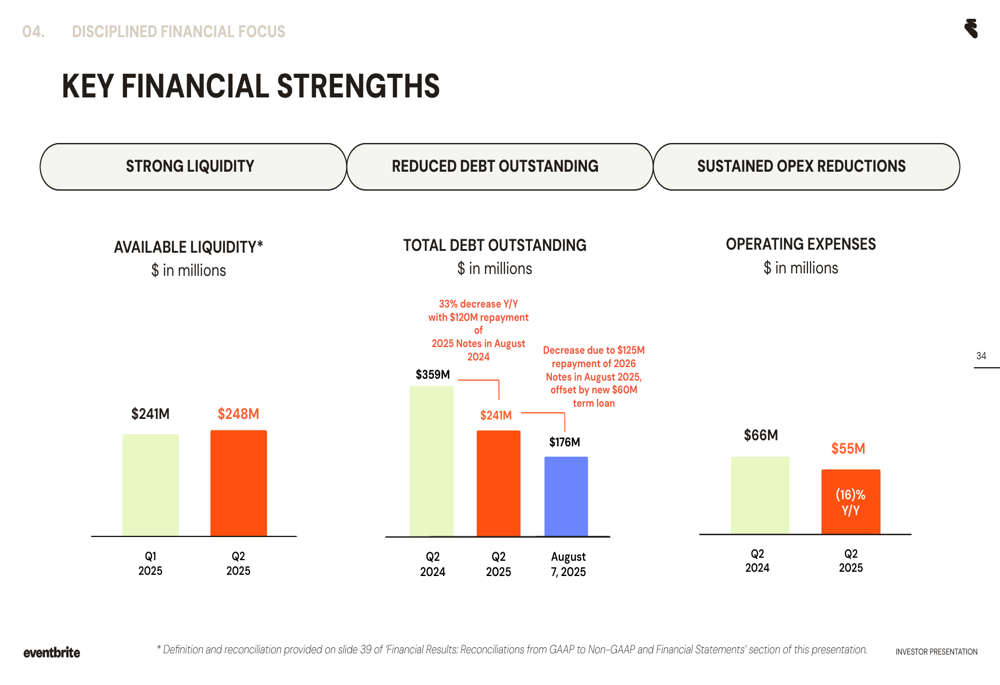
Forward-Looking Statements
For the third quarter of 2025, Eventbrite expects net revenue to be in the range of $70-73 million with an Adjusted EBITDA margin of approximately 7%, excluding non-routine items:
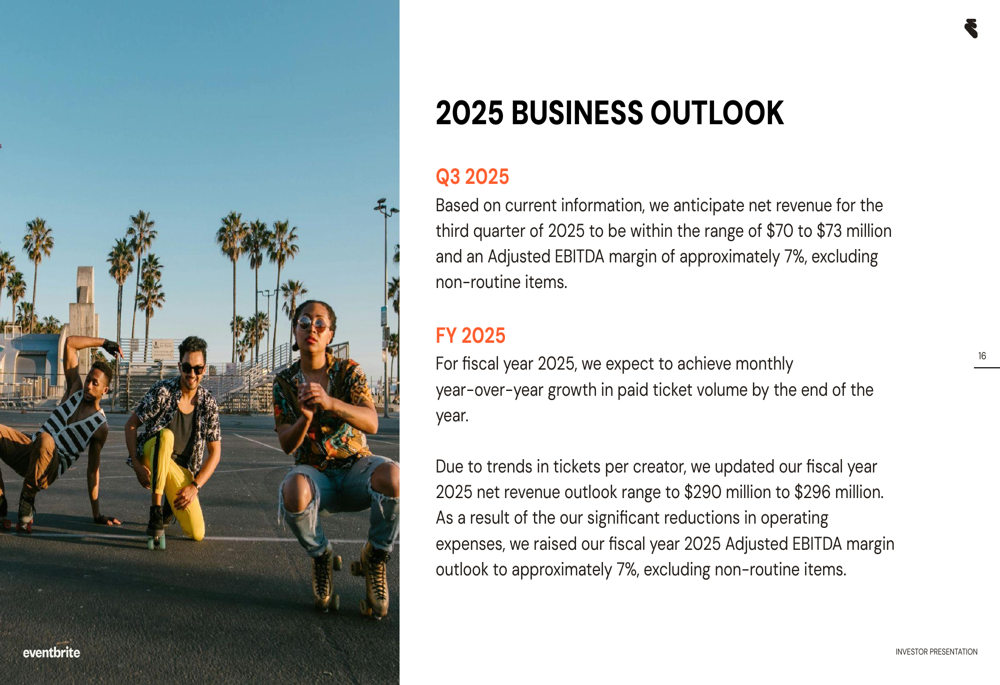
The company has updated its full-year 2025 outlook, narrowing and slightly lowering its revenue guidance to $290-296 million, compared to the previous range of $295-310 million mentioned in the Q1 earnings report. However, Eventbrite raised its fiscal year 2025 Adjusted EBITDA margin outlook to approximately 7%, reflecting the impact of operating expense reductions.
Management expressed confidence in returning to growth, stating they expect to achieve monthly year-over-year growth in paid ticket volume by the end of 2025. This outlook suggests the company anticipates its strategic initiatives will begin yielding results in the coming quarters, despite the current challenges in the events industry.
While Eventbrite continues to face headwinds in ticket volume and revenue generation, its focus on cost discipline, debt reduction, and strategic marketplace enhancements positions the company to potentially benefit when industry conditions improve.
Full presentation:
This article was generated with the support of AI and reviewed by an editor. For more information see our T&C.
